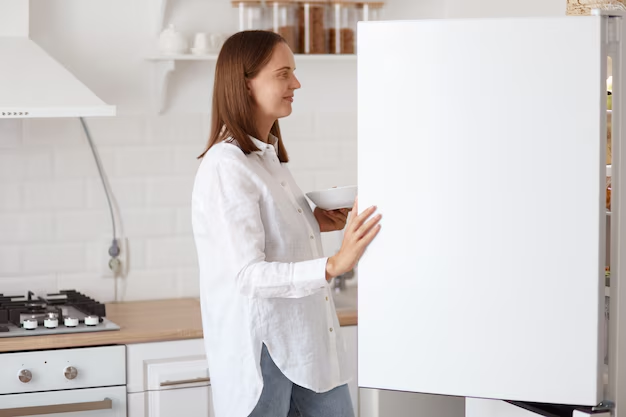A Fresh Look at Food Safety: How Long Can You Keep Leftovers in the Refrigerator?
If you're like most people, your refrigerator often hosts a gallery of yesterday's meals wrapped in cling film or stored in plastic containers. But when it comes to leftovers, we're often left wondering: how long can they safely sit in the fridge before it's time to toss them out? Keeping our food fresh and edible is not just about making the most out of our groceries—it's also about ensuring food safety and protecting our health.
In this comprehensive guide, we'll explore the ins and outs of storing leftovers in the refrigerator, helping you understand the best practices and timelines for different types of foods.
Understanding Shelf Life: The Basics of Leftover Storage
What Defines "Leftovers"?
Before we dive into temperature and timelines, let's first define what "leftovers" mean. Leftovers are typically cooked foods that are not consumed within the same meal and are stored for later consumption. This basic understanding helps in knowing how to properly handle them for safe storage.
Why Refrigerate Leftovers?
Refrigeration is essential for slowing the growth of bacteria that can cause foodborne illness. Foods should be promptly refrigerated within two hours of cooking to minimize the risk of contamination. As a general rule, keeping your fridge at 40°F (4°C) or lower ensures safety and freshness.
How Long Can Common Leftovers Last?
Understanding how long different types of leftovers can safely be stored is crucial for maintaining kitchen hygiene.
Cooked Meat and Poultry
For cooked meats and poultry, you can typically store them in the fridge for 3 to 4 days. This includes chicken, beef, pork, and turkey. Keep them in airtight containers to maintain quality and prevent contamination.
Seafood
Cooked seafood is more delicate and should be consumed within 2 to 3 days. This category includes fish, shrimp, crab, and similar items that are prone to bacterial growth if left for too long.
Soups and Stews
When it comes to soups and stews, especially those containing rice, pasta, or other starches, they can be stored for about 3 to 4 days. To maintain quality, allow them to cool slightly before placing them in the fridge.
Rice and Pasta
Cooked rice and pasta should be consumed within 3 to 5 days. However, they should be kept in tightly sealed containers to prevent them from drying out or absorbing other odors from the refrigerator.
Fruits and Vegetables
Cooked vegetables last about 3 to 4 days, while fresh-cut fruits and uncooked vegetables should be consumed within a similar timeframe once opened or cut.
📝 Quick Summary: Best Practices for Leftover Storage
- Refrigeration: Store leftovers within 2 hours of cooking.
- Temperature: Keep your fridge at or below 40°F (4°C).
- Storage Time: Adhere to food-specific storage times—most range from 2 to 5 days.
- Containers: Use airtight containers to maintain quality and safety.
Tips for Safe Leftover Storage
Cooling and Packing
- Cool Before Storing: Let hot food cool slightly at room temperature before storing in the fridge to prevent raising the internal temperature unnecessarily.
- Small Portions: Store leftovers in small, shallow containers to allow quicker cooling and prevent potential bacterial growth.
Labeling and Rotation
- Label and Date: Use labels to mark the date of storage. This helps in keeping track of the fridge contents' lifespan.
- First In, First Out (FIFO): Adopt the FIFO method to ensure older leftovers are consumed before newer ones.
🌟 Pro Tip: Use Glass Containers
- Better Sealing: Glass containers often offer superior sealing, which helps maintain the food's quality for longer.
- Odor-Free: Glass prevents cross-contamination of food odors.
Recognizing Signs of Spoilage
Knowing how to recognize the signs of spoilage is part of being a savvy home cook.
Visual Check
- Mold Growth: Discard any leftovers showing signs of mold.
- Color Changes: Significant changes in color often indicate spoilage.
Smell Test
- Off Odors: Trust your sense of smell; if something smells off, it’s safer to discard it.
Texture
- Sliminess: A slimy texture is a clear indication that the leftovers are no longer good to eat.
✨ Safety Check: When in Doubt, Throw It Out 🍽️
- Always err on the side of caution when it comes to food safety. If you're unsure about the freshness of leftovers, it's better to dispose of them to avoid potential foodborne illnesses.
Frequently Asked Questions on Leftover Safety
Can I Reheat Leftovers More Than Once?
Reheating leftovers should be done only once for safety reasons. Re-heating multiple times can increase the risk of bacterial growth. Heat to an internal temperature of 165°F (74°C) for optimal safety.
Is It Safe to Freeze Leftovers?
Yes, freezing is an excellent way to extend the life of your leftovers. However, be mindful of the original cook date to prevent freezing foods too close to their spoilage.
What About Foods That Shouldn’t Be Left as Leftovers?
Some foods, like sauces with dairy, mayonnaise-based salads, and certain seafood dishes, don't store well as leftovers. It's better to consume these items fresh.
🥶 Freezing Guidelines
- Freezing Duration: Most cooked meats and soups can be frozen for 2 to 3 months.
- Packaging: Use proper freezer bags or containers to prevent freezer burn.
- Date Marking: Always label with the date of freezing.
Closing Thoughts: Making the Most of Your Leftovers
Practicing safe leftover storage does more than just protect your health—it also minimizes food waste and helps you get the most out of your groceries. By following these guidelines, you ensure that your meals are both delicious and safe to eat, whether freshly prepared or reheated from the fridge.
Remember, the key to success with leftovers lies in knowing your food's shelf life and recognizing when it's time to let go. With a little care and attention, you can enjoy your favorite meals while promoting food safety in your home.
